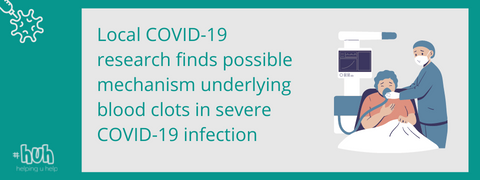In early 2020 the NHS Grampian Endowment Fund launched a call for research applications into COVID-19. Here are first results from one of the successful projects. This project is a collaboration lead by researchers from the University of Aberdeen – Professor Nicola Mutch and Dr Claire Whyte and NHS Grampian – Dr Jamie Cooper and Professor Henry Watson. Here is what they told us:
The most common causes of dying from a COVID-19 infection are due to
· blood clot formation - obstructing the blood vessels in the lung, and
· the formation of strands of fibrous* material causing the lung to be unable to exchange oxygen.
We have been looking at these processes in patients with COVID-19 infection. We are particularly interested in the clot busting (fibrinolytic) system. This system normally removes clots once they have been formed, so that blood vessels are unblocked and go back to normal function. The same system has some control over the formation of fibrous tissue in the lung. Normally the system works in a balanced way, with some factors switching it on and others switching it back off. In COVID-19 infections we have found that the process of switching off the system is sometimes overwhelmed, so that clots are persisting and fibrous tissue is not being removed. Most of this is due to very high levels of a protein called PAI-1. Our study shows that the more ill the patients are the higher the level of this protein and the worse the outcomes. Our data shows that we can overcome the persistence of these blood clots by using a clot busting drug that is not sensitive to PAI-1. These data are relevant in explaining the mechanism behind poor outcomes in COVID-19 and they also allow us to potentially target this pathway as a treatment strategy.
* fibrous – made out of many fibres, looking like fibres
For those interested, here is the link to the scientific publication:
The suboptimal fibrinolytic response in COVID‐19 is dictated by high PAI‐1 - Whyte - - Journal of Thrombosis and Haemostasis - Wiley Online Library
